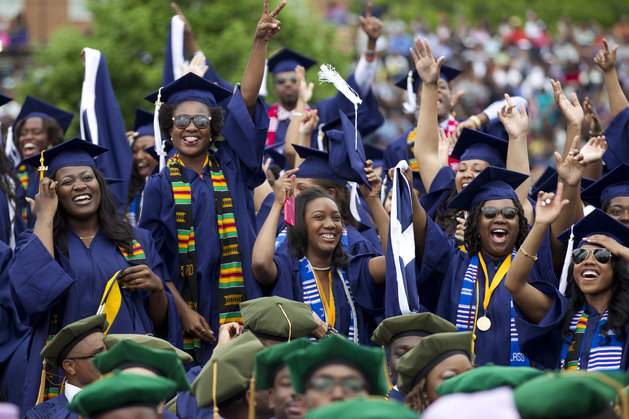INDIANAPOLIS — The NCAA released its latest Academic Progress Rate results Wednesday, touting continued improvement by athletes in the classroom overall _ even in two sports that have traditionally lagged _ while acknowledging that lower-resource schools are struggling to perform.
This year’s overall four-year average, 978, was up two points from last year’s record high. Men’s basketball came in at 961, a four-point jump over 2013-14. Football had a 956, a five-point increase in one year.

Scores are calculated for each team at each school. An athlete receives one point each semester for being academically eligible and another point each semester for staying in school. A perfect score is 1,000.
Fewer penalties were handed out, too. This year, 21 teams face postseason bans and 28l face other penalties. Last year, 42 teams had postseason bans and 70 faced other punishments.
In the one-year measurements from 2013-14, the average (980.8) and median (990) were record highs. And the number of players who were 0 for 2 _ those who left school while academically ineligible _ hit a record low with 2,154. That was down from 2,467 in 2012-13 and from 3,023 when the NCAA first started tracking 0-for-2s in 2008-09.
NCAA President Mark Emmert applauded the progression.
“We are pleased and proud of their accomplishments,” Emmert said in a statement released by the NCAA. “Our goal always has been to encourage students to achieve academically and earn their degrees. Every year, Division I students prove that both academic and athletic success are achievable.”
But there are also concerns.
The numbers reveal clear evidence of a money gap.
No schools from the five richest conferences _ ACC, Big Ten, Big 12, Pac-12 or SEC _ or the Football Bowl Subdivision are facing punishments. In contrast, 15 of the 21 teams facing postseason bans, and 23 of the 28 teams being sanctioned with Level 1, 2 or 3 penalties, come from institutions defined as limited-resource schools even though the NCAA has given those schools more leeway after the cutline was increased to 930 two years ago.
Teams competing in the five power conferences had an average single-year APR score of 985, while those in all other conferences had an average score of 979. The power conferences also had better scores in eligibility and retention.
Five Football Championship Subdivision teams _ Alabama State, Florida A&M, Gardner-Webb, Savannah State and Tennessee State _ received postseason bans. Men’s basketball teams at Alcorn State, Central Arkansas, Florida A&M and Stetson also will not be eligible for next year’s NCAA tournament. The only women’s basketball team to make the banned list was Savannah State.
All of those schools with the exception of Central Arkansas, Gardner-Webb and Stetson are considered historically Black colleges or universities.
Transfer rates between four-year schools continue to climb, too. In men’s basketball, the number hit a record high of 13.4 percent in 2013-14, compared with 9.4 percent in the first year of the report in 2003-04.
In football, that number has gone from 3.6 percent in 2003-04 to 3.7 percent last year, while 9.2 percent of women’s basketball players are leaving now compared with 7.6 percent in the first report.
Critics have long contended that the APR is not an accurate measure of academic progress because the numbers can be skewed by various factors such as clustering athletes in certain classes or majors or steering students to certain instructors. They also say athletic departments at the wealthiest schools are seeing the dividends of investing heavily in academic resource centers and tutors that other schools and other students don’t have access to.
Like HBCU Buzz on Facebook. Follow us on Twitter.



